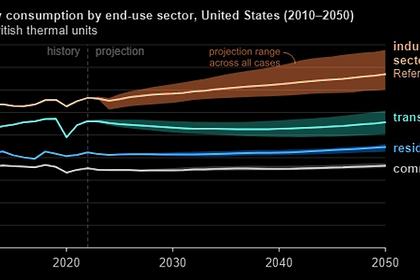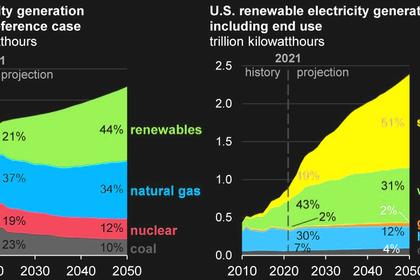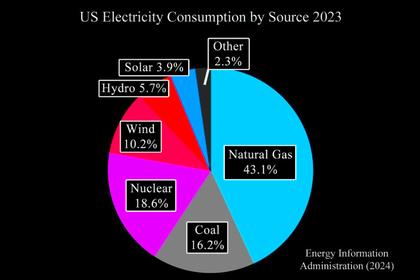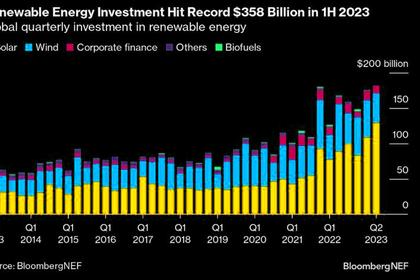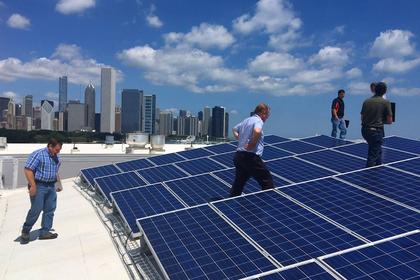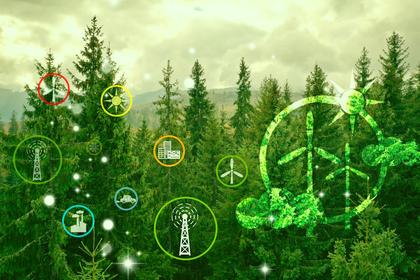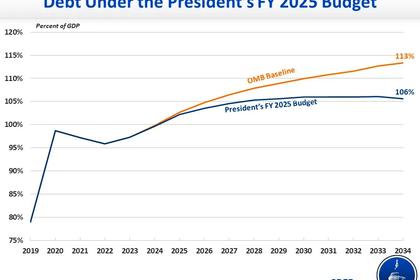
U.S.: LESS ENERGY FOR MORE MONEY

By ED REID Vice President, Marketing (Retired) / Executive Director (Retired) / President (Retired),
Columbia Gas Distribution Companies / American Gas Cooling Center / Fire to Ice, Inc.
ENERGYCENTRAL - Jul 23, 2024 - The DOE Decarbonizing Buildings blueprint, while it deals with fossil fuel end use elimination in the buildings sector, is far more focused on limiting the electricity demand and consumption increases resulting from the replacement of oil and gas appliances and equipment and ICE vehicles with electric end use appliances, equipment and electric vehicles.
The logical first step in the decarbonizing process is improvements in the building envelopes to reduce energy demand and consumption. This step should be completed prior to the replacement of existing HVAC equipment with heat pumps to assure proper equipment sizing, since equipment oversizing reduces seasonal efficiency. Other appliance and equipment replacements can occur at any time, as their selection is unaffected by building envelope changes. However, installation of electric appliances and equipment might necessitate changes to the building electric wiring, power panel and service connection, which should also be addressed early in the process.
Once the building envelope improvements have been completed, the next logical step would be assessment of the building and its surroundings for the installation of solar collectors, which would reduce the building’s annual consumption of electricity from the grid and its peak electricity demand. There is also interest in the installation of local electricity storage, associated with on-site solar, which could further reduce building demand on peak and could potentially be drawn upon by the grid during periods of peak demand or low renewable generation. Installation of solar collectors, with or without on-site battery storage would also necessitate changes to the building electrical system.
The DOE blueprint assumes the adoption of electric vehicles, which would also necessitate changes in the building electrical system to provide for vehicle charging circuits but might also require power panel and service connection changes. The blueprint suggests the potential to draw upon the EV batteries during periods of peak grid demand or low renewable generation.
The blueprint contemplates a tripling of load shedding demand side management potential using smart meters and the Internet of Things (IoT) which could interrupt internet connected appliance and equipment operation to reduce demand on the grid. Resiliency to these service interruptions could be achieved through passive energy storage in the building and the use of larger volume storage water heaters. Laundry appliance use is relatively resilient. The least resilient appliances are probably ranges and ovens.
Smart meters make it possible to tailor rolling blackout coverage and duration. They also support development of “virtual powerplants”, which are groups of customers who agree to be interrupted, as needed, under specific sets of circumstances.
This suggests that DOE understands that grid expansion would be difficult and expensive and that a renewable powered grid would be less reliable than a grid powered by dispatchable generation.
There is no question that more efficient buildings could reduce energy consumption and demand. There is also no question that more efficient appliances and equipment could reduce energy consumption and demand. Lower power, 120 volt versions of current 240 volt appliances such as ranges, ovens, water heaters and laundry dryers would reduce demand, though at the cost of convenience. It might even be possible to use 120 volt heat pumps in apartment building conversions.
While the DOE roadmap calls for costly changes to buildings and equipment, there is little discussion regarding how these changes will be funded, with the exception that approximately 40% of government funding would be directed toward disadvantaged communities, which arguably represent the greatest need for investment and the least ability to pay.
We face a potential future of perpetual subsidies and incentives combined with mandated changes and banned products. This potential future does not include reduced energy costs or increased liberty and freedom.
-----
This thought leadership article was originally shared with Energy Central's Load Management Community Group. The communities are a place where professionals in the power industry can share, learn and connect in a collaborative environment. Join the Load Management group today and learn from others who work in the industry.
-----
Earlier:
